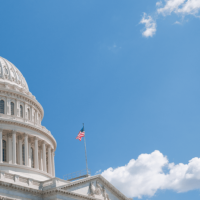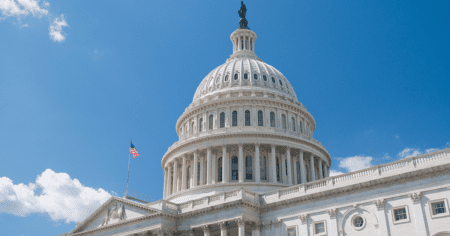PCDC: Primary Care Needs Immediate Financial Relief from the Federal Government


 In an urgent letter to U.S. Department of Health and Human Services (HHS) Secretary Alex Azar, PCDC asked for an immediate, targeted allocation of federal aid to primary care providers in order to offset reduced revenue and increased costs associated with COVID-19. PCDC was one of several organizations to send a letter to HHS highlighting the fact that primary care providers are in dire financial straits. The letter used data from a survey of primary care providers that showed nearly half of those surveyed were unsure whether they had enough funds to remain open even for the next four weeks.
In an urgent letter to U.S. Department of Health and Human Services (HHS) Secretary Alex Azar, PCDC asked for an immediate, targeted allocation of federal aid to primary care providers in order to offset reduced revenue and increased costs associated with COVID-19. PCDC was one of several organizations to send a letter to HHS highlighting the fact that primary care providers are in dire financial straits. The letter used data from a survey of primary care providers that showed nearly half of those surveyed were unsure whether they had enough funds to remain open even for the next four weeks.
Practice closures, actual and threatened, across primary care are concerning, with serious repercussions from deferred care. The loss of many of our primary care providers will affect us all – not just the small percentage of the population who will contract COVID-19. Absent of immediate cash assistance, many primary care practices will lack the ability to survive this crisis. More direct support is needed to help all primary care practices stay open through the pandemic and its aftermath.
Read the full letter below.
_____________________________________________________________________________________________________
June 1, 2020
The Honorable Alex M. Azar II
Secretary
U.S. Health and Human Services
200 Independence Ave SW
Washington, DC 20201
Dear Mr. Secretary:
The Primary Care Development Corporation (PCDC) is deeply concerned about the lack of funding dedicated to primary care in disbursements from the COVID-19 Provider Relief Fund (PRF). PCDC is a national nonprofit organization and U.S. Treasury-certified Community Development Financial Institution dedicated to building equity and excellence in primary care. We have advocated for primary care for 26 years and assisted over 1,000 primary care practices in more than 40 states and territories. Our mission is to create healthier, more equitable communities by building, expanding, and strengthening the national primary care infrastructure.
Since our founding in 1993, PCDC has improved primary care access for more than 1 million patients by leveraging more than $1.2 billion to finance over 130 primary care projects. Our strategic community investments have built the capacity to provide nearly 4 million medical visits annually, created or preserved more than 15,000 jobs in low-income communities, and transformed 1.8 million square feet of space into fully functioning primary care practices. Through our capacity building programs, PCDC has trained and coached more than 9,000 health workers to deliver superior patient-centered care. We have also supported over 800 primary care practices to achieve patient-centered medical home recognition, improving care for more than 5 million patients nationwide. All told, PCDC’s work has impacted more than 40 million patients across the United States and territories.
We urge the Department of Health and Human Services (HHS) to make an immediate, targeted allocation from the PRF to primary care clinicians and/or practices in order to offset reduced revenue and increased costs associated with COVID-19. The targeted allocation that HHS has already made to rural hospitals from the PRF should serve as a model for primary care. A targeted allocation for primary care must be:
Without immediate action to support primary care with targeted funding from the PRF, many practices will soon be forced to close their doors or sell their practices to investors, hospital systems, or others, which evidence compiled by HHS suggests is likely to increase costs. HHS runs the risk of maintaining the dominant hospital-centric system by prioritizing investments in hospital-led networks rather than community-based primary care. A recent survey found that nearly half of primary care clinicians reported that they have laid off or furloughed staff; two-thirds report that less than half of the care they are providing is reimbursable; and 45% are unsure if they have the funds to stay open for the next four weeks.
Congress and the Administration have taken important steps to shore up the health care system, but federal support has not been sufficient, and it has not reached everyone: most relief has gone to institutions and those who participate in Medicare, leaving behind primary care clinicians that primarily serve Medicaid, privately insured, and uninsured patients. Trickle down reimbursement rarely makes it to its target. Absent of immediate cash assistance, many primary care practices will lack the ability to survive this crisis. The loss of many of our primary care providers will affect us all – not just the small percentage of the population who will contract COVID-19. More direct support is needed to help all primary care practices stay open through the pandemic and its aftermath.
Practice closures, actual and threatened, across primary care are concerning, with serious repercussions from deferred care. As the country begins to reboot and reopen, we must be wary of what some experts are calling the “second pandemic.” For the past several months, people with chronic diseases have gone without critical screenings, vaccinations, and medications because of reduced primary care capacity, social distancing guidelines, and the associated public fear. In a recent survey, 38% of primary care clinicians believe that there will be non-COVID-19 related deaths among their patients due to diverted or avoided care. More specifically:
A lack of chronic disease management and disproportionate rates of COVID-19, particularly in high-need communities, will worsen health outcomes and increase mortality in many neighborhoods across the country. Additionally, as the need to address the poor social conditions that disproportionately impact the health of minority communities becomes increasingly self-evident in the midst of this crisis, PCDC wishes to draw attention the fact that access to primary care is a social determinant of health, as recognized by the WHO, CDC, and the federal Healthy People initiative framework. These disparities in COVID-19 reflect the persevering racial and economic inequalities in health status and emphasize the salience of primary care access and addressing the social determinants of health as a top priority to governments and health care organizations.
The lack of sufficient resources directed towards primary care has resulted in mounting rates of chronic disease and left many vulnerable to threats like COVID-19. The pathway to recovery from COVID-19 is through increased investments in primary care in order to strengthen the system’s ability to keep us healthy.
The next round of federal stimulus should set the tone for future increases in investment in primary care which will, in turn, reduce the total cost of care as well as improve outcomes. This will re-balance delivery system funding and payment to address the disproportionately low share of funds that primary care currently receives throughout the country. Many states, such as Oregon, Delaware, and Rhode Island, have already undergone such transformation efforts. Effective primary care payment supports more than just traditional primary care; it covers integrated behavioral and public health, care coordination, care transitions, and efforts to address social determinants of health.
Primary care is the front door of the health care system, and patients need to know they have a health home that is safe, prepared, and open to them now and in the future.
As states begin to open back up, we do anticipate that more practices will offer in-person visits. However, we do not think that, for the balance of the year, these visits will offset: financial losses already incurred; the reduced appointment schedules needed to mitigate COVID-19 spread; and some reluctance on the part of patients to avail themselves of care as the pandemic moves to the next phase.
Secretary Azar, you shared your vision of a more effective health care system with the Primary Care Collaborative in a stirring speech in 2018. We share your vision to transition to payment based on value, with less red tape and more informed and empowered patients. That transition is endangered by the deep financial stress caused by the COVID-19 pandemic on our already inadequate primary care infrastructure. We urge you to commit significant, immediate resources from the PRF to rescue primary care clinicians before the COVID-19 pandemic inflicts more collateral damage on them and the millions of Americans who rely on them.
Sincerely,
Louise Cohen
Chief Executive Officer
Primary Care Development Corporation